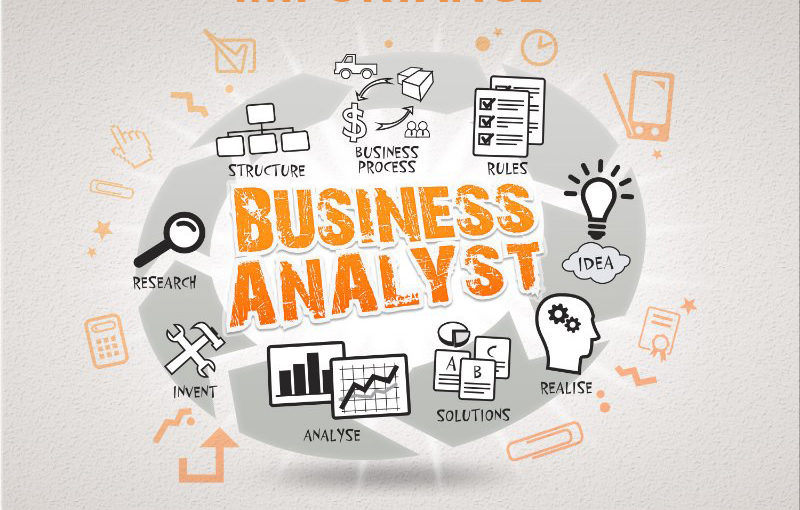Business Analyst Vs Project Manager: Gap and Synergies
In the world of business, efficiency and effectiveness are at the heart of success.
Two key roles that aim to ensure these objectives are the Business Analyst and the Project Manager.
Though these roles may seem similar and are sometimes used interchangeably in smaller organizations, they are fundamentally different in many aspects.
Understanding the distinctions between a Business Analyst and a Project Manager is essential for anyone planning to hire for these roles or considering a career in either field.
This article will explore the core differences and synergies between these two critical business roles; a Business Analyst and a Project Manager.
Business Analyst: A Comprehensive Overview

At the core of a Business Analyst’s role lies the imperative to comprehend the intricate web of business necessities.
These professionals don’t just pinpoint areas that need refinement; they proactively seek out opportunities that, when capitalized upon, lead to better business outcomes.
To simplify, if a business were a puzzle, a Business Analyst would be the one determining the missing pieces, finding them, and then helping to fit them in the right place.
Real-Life Example
Imagine a retail company looking to enhance its e-commerce platform. While sales are steady, customer feedback highlights a complex checkout process.
Here, a Business Analyst would:
Requirement Analysis
The cornerstone of any project starts with a deep understanding of the problem or need.
For a Business Analyst, this means diving into the intricate details of customer feedback, operational inefficiencies, or any specific gaps identified.
The Analyst meticulously maps out the existing process—be it a checkout system, data flow, or any other business operation—to document the current user experience.
By doing so, they can capture the specific needs of the user.
For instance, if customers are clamouring for a quicker checkout process, the Business Analyst would document the current number of steps involved, the average time it takes to complete a purchase, and other relevant metrics.
This analysis is crucial for designing an optimized experience and provides the foundational layer upon which solutions can be built.
Business Process Modelling
Once the current state is thoroughly documented, the Business Analyst employs tools like Microsoft Visio, Business Process Model, and Notation (BPMN), or even simple flowcharts to create a visual representation of the process.
This model can be invaluable for identifying bottlenecks, redundancies, or any inefficiencies that could be streamlined.
Based on the insights gathered, the Business Analyst then drafts an optimized model for the business process.
This isn’t just an academic exercise; it’s a blueprint that guides the development team in making the proposed improvements a reality.
Quality Assurance
Quality assurance isn’t just about spotting bugs; it’s about ensuring that the end product meets the initial requirements and user expectations.
After the IT team develops the new feature or system based on the optimized model, the Business Analyst collaborates closely with the quality assurance teams.
They participate in drafting test cases, verifying functionality, and sometimes even involving themselves in user acceptance testing to ensure that what is built is what was envisioned.
Stakeholder Communication
Perhaps one of the most vital roles of a Business Analyst is to act as a liaison between various stakeholder groups.
This involves maintaining open and consistent communication channels between end-users, business leadership, and technical teams.
The Business Analyst updates stakeholders at different phases of the project, seeks feedback, and makes adjustments as necessary to ensure everyone is aligned with the project’s goals and status.
By synthesizing input from various sources and translating it into actionable information, the Business Analyst ensures that there’s a common understanding and agreement on what the project aims to achieve and how it’s progressing.
This role as a communicator is pivotal in making sure that the project does not deviate from its intended objectives and that any roadblocks or changes are transparently managed.
These four responsibilities encapsulate the diverse and vital roles a Business Analyst plays in an organization.
They are not merely gatherers of requirements but are instrumental in shaping, implementing, and validating business solutions.
In contrast, a Project Manager in this scenario would focus on ensuring that the project to revamp the checkout process is completed on time, within scope, and within budget.
Their concern wouldn’t necessarily delve deep into ‘what’ needs fixing but would rather emphasize ‘how’ to get it done efficiently.
Thus, while the Business Analyst and Project Manager might work closely in this scenario, their roles are distinct.
A Business Analyst delves deep into ‘what’ and ‘why’—what is the problem, and why is it a problem? In contrast, a Project Manager navigates the ‘how’—how can we get this solution implemented efficiently and effectively?
In essence, the Business Analyst bridges the gap between the technical team and stakeholders, ensuring that business requirements translate into actionable solutions, driving both efficiency and effectiveness.
The Role of the Project Manager

While a Business Analyst is focused on understanding business needs and finding solutions, the Project Manager takes on a different but equally critical set of responsibilities. Primarily, the Project Manager is at the helm of the ship that is a project.
Their role is to ensure that the project not only sets sail but also reaches its intended destination within the predetermined time and budget.
They are responsible for planning, executing, and bringing the project to a close, ensuring that the project’s goals are met while adhering to approved timelines and budgets.
Core Responsibilities of the Project Manager

1. Project Planning
Planning is the initial and perhaps one of the most crucial stages of project management.
It involves setting the project scope, defining objectives, and developing a detailed roadmap to achieve these objectives.
This is a comprehensive step that includes everything from setting timelines to establishing communication protocols and milestones.
Unlike a Business Analyst, who focuses on the “what” and “why,” the Project Manager focuses on the “how” and “when.”
2. Resource Allocation
Once the plan is laid out, the next step for the Project Manager is to decide what resources are needed to execute the plan.
This involves human resources, software, hardware, budget, and time.
The Project Manager allocates these resources, ensuring that they are utilized efficiently and effectively.
They might work with a Business Analyst to understand the necessary skill sets or tools needed but ultimately, they are the ones who allocate and manage these resources.
3. Risk Management
Every project comes with its own set of risks and uncertainties. While a Business Analyst might identify potential business risks in the solution, a Project Manager goes beyond to anticipate project risks that could affect timelines or resource availability.
These could range from resource turnover to budget cuts and even changes in market dynamics.
Project Managers identify these risks early on and develop strategies to mitigate them, thereby ensuring that the project stays on course.
4. Team Leadership
Leadership is another pivotal role that a Project Manager plays. They lead the project team by setting the vision, resolving conflicts, and ensuring that all team members are focused on their individual tasks.
While a Business Analyst might lead from a subject matter expertise standpoint, the Project Manager leads the charge in keeping the team aligned with the project goals.
In summary, the roles of a Project Manager and a Business Analyst are distinctly separate but also complementary.
While the Business Analyst delves deep into understanding business needs and proposing solutions, the Project Manager ensures that these solutions are implemented successfully within the scope, time, and budget constraints.
Understanding these nuances between Business Analyst vs Project Manager can guide an organization in leveraging both roles effectively for the successful completion of projects.
Business Analyst Vs Project Manager: The Differences

1. Focus
Business Analyst: Focused on understanding business needs and finding solutions.
Project Manager: Focused on executing the project from start to finish.
2. Skills Required
Business Analyst: Strong analytical skills, business and technical proficiency, stakeholder communication.
Project Manager: Strong leadership skills, risk management, resource allocation.
Tools Used
Business Analyst: Mostly uses data modelling and business analysis tools like Microsoft Visio, Balsamiq, etc.
Project Manager: Often uses project management software like MS Project, Asana, or Jira.
3. Stakeholder Engagement
Business Analyst: Engages mainly with business stakeholders and sometimes with customers.
Project Manager: Engages with team members, business leaders, and sometimes external vendors.
Case Study: A Real-World Scenario of Business Analyst Vs Project Manager

In an ever-competitive IT landscape, let’s examine a real-world scenario where an IT company is gearing up to launch a new software product.
In this case, both the roles of Business Analyst and Project Manager are pivotal, but they function in markedly different capacities.
Role of the Business Analyst
The Business Analyst takes the centre stage initially. They are primarily responsible for understanding the market demand for the software product, which involves conducting market research and analysing consumer behaviour and needs.
Armed with this information, the Business Analyst then focuses on requirement gathering.
They work closely with stakeholders to understand and document feature requirements for the new product.
What does the customer want this software to do? What problems is it solving? They might develop user stories, use-case models, or other business analysis modelling tools to capture these functional and non-functional requirements.
In our case, the Business Analyst may find out that the target market needs a software product with robust data analytics capabilities.
They may produce a set of detailed feature requirements that cater to this need, such as real-time data tracking, user-friendly dashboards, and customizable reports.
The Business Analyst also has a role in the initial phase of quality testing. They work with the Quality Assurance (QA) team to ensure that the developed features meet the documented requirements and are in alignment with market demands.
The Business Analyst may even create test scenarios or cases that reflect real-world use of the software, ensuring the final product meets business needs.
Role of the Project Manager
Once the project scope and feature set have been defined, that’s where the Project Manager comes into play. With the groundwork laid by the Business Analyst, the Project Manager starts by creating a comprehensive project plan.
This includes defining project milestones, setting timelines, and identifying resource needs.
For example, the Project Manager might allocate specific teams to develop the data analytics capabilities of the software, ensuring they have the necessary tools and training to accomplish the task efficiently.
They would also develop a timeline that specifies when each feature should be completed, tested, and integrated into the final product.
Risk management is another significant aspect of the Project Manager’s role. They continuously identify and assess potential risks that could derail the project, such as delays in development, cost overruns, or resource unavailability, and then create contingency plans for them.
Finally, the Project Manager is responsible for guiding the project from its initiation to closure.
They track progress against the plan, make adjustments as needed, resolve issues that arise, and ensure that the project meets all its objectives on time and within budget.
In summary, while both roles overlap in some areas, their core functions are different yet complementary.
The Business Analyst provides the ‘what’ and ‘why,’ digging deep into business needs and market demands.
The Project Manager, on the other hand, focuses on the ‘how,’ ensuring that the project proceeds as planned.
In our case study, the Business Analyst ensures the software meets market demands and feature requirements, while the Project Manager makes sure these features are delivered on time and within the allocated budget.
Understanding the unique contributions of each role—Business Analyst vs. Project Manager—can significantly enhance the success rate of projects.
Synergies Between Business Analyst and Project Manager

While different, the roles are complementary. In many projects, the Business Analyst will work closely with the Project Manager to identify requirements and risks, which the Project Manager will then plan for.
Effective communication between these two roles can significantly contribute to the project’s success.
When to Choose One Over the Other
It all comes down to the needs of your project or business. If the focus is more on what needs to be built or improved — choose a Business Analyst.
If the focus is on how to execute a project successfully, opt for a Project Manager.
Conclusion
Understanding the differences and synergies between a Business Analyst and a Project Manager is crucial for effective business operations.
While both roles aim for business efficiency and effectiveness, the paths they take to achieve these ends are different.
Whether you are an aspiring Business Analyst or Project Manager, knowing these differences will help you tailor your skills and responsibilities effectively.
The world of business is complex, and these roles help to navigate that complexity, each in its own unique way.
In summary, Business Analysts are the architects of the solution, while Project Managers are the builders.
While the Business Analyst works towards what needs to be achieved, the Project Manager works on how to achieve it.
Both roles are invaluable and, when working in tandem, become a powerful force for organizational success.











